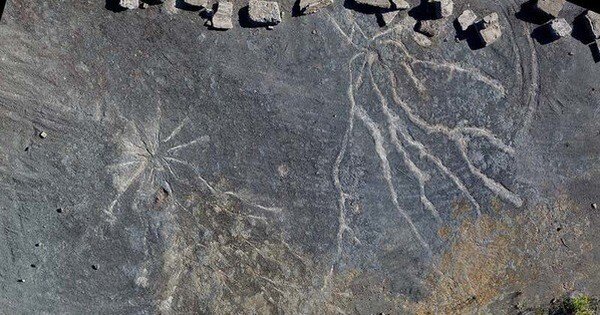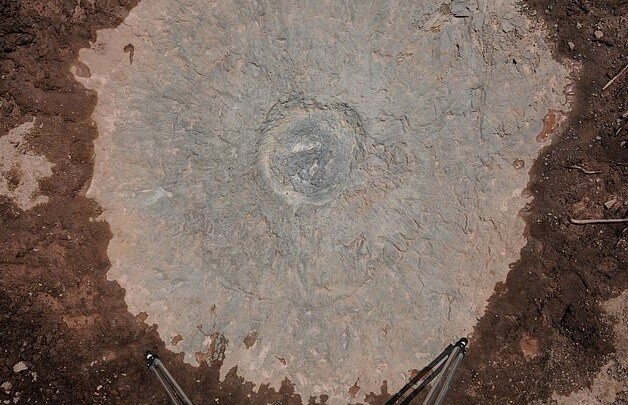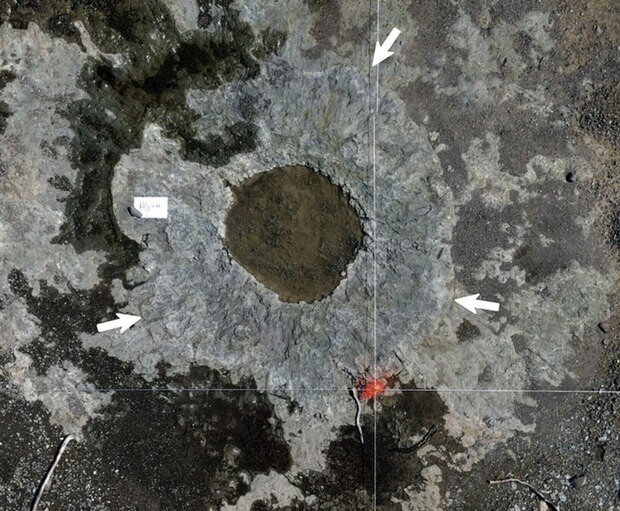Discovered the Oldest Forest in the World, dating back 386 million years
Ruins of an ancient forest have been identified at a quarry near Cairo, New York, USA. The fossils have been dated to 386 million years old, making them the oldest known fossils.

According to scientists, the new site not only tells us more about how Earth’s climate has changed over time, but also evidence that forests evolved 2 to 3 million years earlier than previously thought. before. The findings were published recently in the journal Current Biology and New Scientist.
“Charles was just walking across the floor of the quarry and he noticed these large root structures are very special,” said Christopher Berry at Cardiff University in the UK – the find involved Charles Ver Straeten at the New State Museum York, who discovered the first fossils in 2008.

The researchers found three types of trees at the site – evidence that the ancient forests consisted of several different species of trees. One of them, belonging to the genus Archeopteris, has roots reaching up to 11 meters long. This species is similar to modern conifers and was the first known to have evolved flattened green leaves.
At an abandoned quarry near the town of Cairo, New York, scientists suddenly discovered the remains of the oldest forest that has ever existed in Earth’s history.
This discovery is considered a turning point in the history of the formation of life on the planet. When old trees develop clusters of roots like these, they consume them to remove carbon dioxide (CO2) from the atmosphere and lock it in.

Previously, the oldest Archaeopteris fossils found were dated to no more than 365 million years old, Berry said. Exactly when this plant evolved into a modern tree is still unclear.
But now, the discovery in Cairo suggests that Archaeopteris began its transition about 20 million years ago, said Patricia Gensel, a paleontologist at the University of North Carolina.
“The size of those root systems has really changed the way we look,” she said. By 20 years ago, researchers thought that trees with such large and complex root systems did not develop so early in geological history.
Archaeopteris not only incubates and nurtures the life, the creatures around him, but also helps promote the process of life evolving and covering all over the Earth.

“Archaeopteris seems to reveal the beginnings of the future of what forests will eventually become,” said William Stein, a biologist at Binghamton University in New York and lead author of the new study.
Based on what we know from earlier fossil body fossil evidence of Archaeopteris, and now from the root evidence that we’ve added, these plants have evolved very rapidly relative to plants. Although still significantly different from modern tree species, Archaeopteris seems to indicate the future evolutionary path of forests at that time.”
Stein and his team also discovered evidence of “scaly plants” of the class Lycopsida – trees that are only thought to have existed in the Carboniferous period millions of years later, at the end of the Devonian period. The new findings therefore provide evidence that forests evolved much earlier than previously known.
Christopher Berry, a paleontologist at Cardiff University, UK, said the quarry floor the team found was about half the size of a rugby field. It was a layer cut across just below the surface of the ancient forest.
In fact, when looking at the age of the forest, we can know that at the time when it was most powerful, on Earth there were no birds, terrestrial vertebrates and even animals. dinosaur. These species only appeared and developed 150 million years after this forest appeared.
However, this forest is not a place where no animals live. Instead, it is likely inhabited by millipedes and other insects. “It’s funny to think about a forest without big animals,” Chris Berry, a paleontologist at Cardiff University and a co-author of the new study, told The Guardian.
Forests and their evolution have played a central role in shaping our planet’s climate and ecosystems. By capturing carbon dioxide, forests have reduced levels of greenhouse gases to modern-day levels, significantly cooling the planet.
According to Sandy Hetherington at the University of Oxford, fossil research can help provide clues about the relationship between deforestation and modern climate change.
“Understanding how this has happened in the past is important for predicting what will happen in the future due to climate change and deforestation,” she said.
